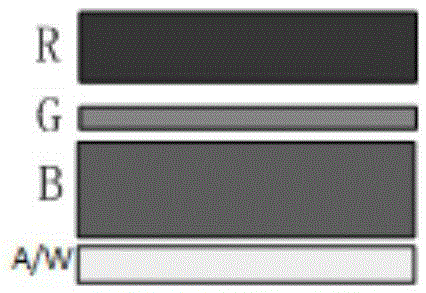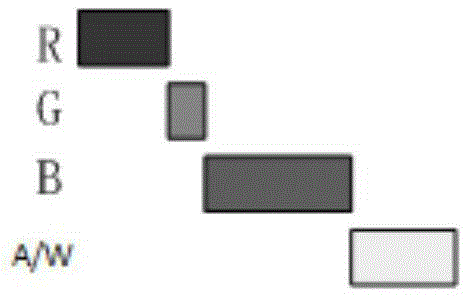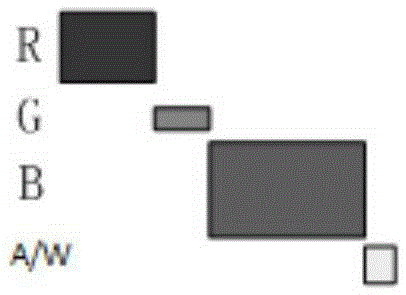Four-color LED light mixing method based on visible light communication
A visible light communication and light mixing technology, applied in the field of wireless optical communication, can solve the problems of not considering the needs of communication, the system design has not yet appeared, and the control of lighting indicators is not considered.
- Summary
- Abstract
- Description
- Claims
- Application Information
AI Technical Summary
Problems solved by technology
Method used
Image
Examples
Embodiment 1
[0114] refer to Figure 1b , in the serial mode, only the time pulse width of each monochromatic light is adjusted. According to the obtained [k 1 ,k 2 ,k 3 ,k 4 ], adjust the corresponding light-emitting time pulse width of each monochromatic light, and obtain the target mixed white light at the emission end.
[0115] i. First calculate the response current I of the APD at the receiving end when each monochromatic light is emitted respectively si . It is known that the response function when the APD gain at the receiving end is 1 is R(λ). Considering the spatial positions of the receiving end and the transmitting end, there is
[0116] I s i = ( m + 1 ) A 2 πd 2 cos m ...
Embodiment 2
[0140] refer to Figure 1c , In the serial mode, each monochromatic photocurrent and luminous time pulse width can be adjusted. According to the obtained [k 1 ,k 2 ,k 3 ,k 4 ] to adjust the ratio between the monochromatic photocurrent and the luminous time pulse width. Assume that the pulse width of each monochromatic light emitting time is x i , the ratio of the current relative to the 700mA drive current is y i , then there is the following relationship:
[0141] x i the y i =k i
[0142] i. First calculate the response current I of the APD at the receiving end when each monochromatic light is emitted respectively si . It is known that the response function when the APD gain at the receiving end is 1 is R(λ). Considering the spatial positions of the receiving end and the transmitting end, there is
[0143]
[0144] in,
[0145] M is the output gain of APD (take M=50);
[0146] m = - ln ...
Embodiment 3
[0174] refer to Figure 1a , in parallel mode according to the obtained [k 1 ,k 2 ,k 3 ,k 4 ], adjust the corresponding bias current of each monochromatic light, and obtain the target mixed white light at the emission end.
[0175] i. First calculate the response current I of the APD at the receiving end when emitting different monochromatic lights si . It is known that the response function when the APD gain at the receiving end is 1 is R(λ). Since a variety of monochromatic lights are sent and mixed with white light at the same time, there is crosstalk at the receiving end, so filters are needed to filter the colors. Suppose the filter function of the filter is F i (λ), the response function of the APD at the receiving end is R(λ). Considering the spatial position of the receiving end and the transmitting end, as well as the cross-interference between different lights, there is
[0176]
[0177] In order to send j color light, the response current obtained through...
PUM
 Login to View More
Login to View More Abstract
Description
Claims
Application Information
 Login to View More
Login to View More - R&D
- Intellectual Property
- Life Sciences
- Materials
- Tech Scout
- Unparalleled Data Quality
- Higher Quality Content
- 60% Fewer Hallucinations
Browse by: Latest US Patents, China's latest patents, Technical Efficacy Thesaurus, Application Domain, Technology Topic, Popular Technical Reports.
© 2025 PatSnap. All rights reserved.Legal|Privacy policy|Modern Slavery Act Transparency Statement|Sitemap|About US| Contact US: help@patsnap.com



